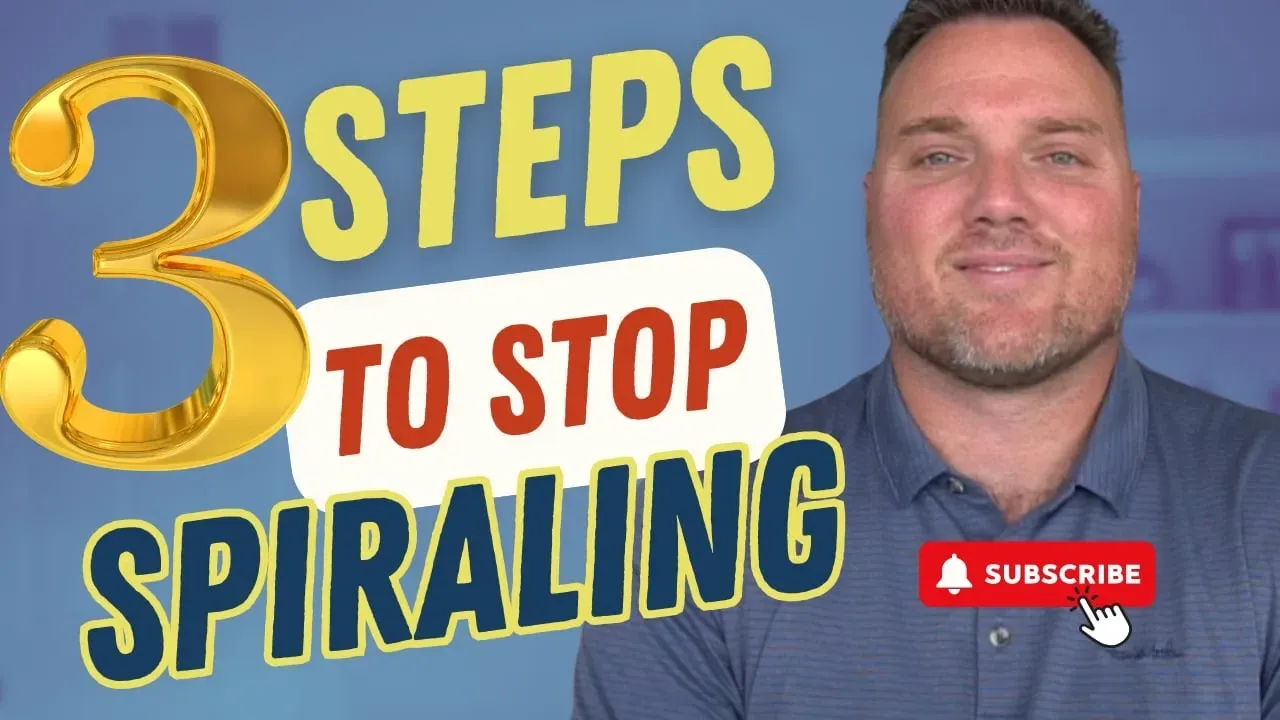3 Practical Steps to Stop OCD and Anxiety Spirals
May 13, 2025
Three Steps to Stop Spiraling with OCD and Anxiety: Insights from Matt Codde
Are you tired of feeling trapped in an endless loop of OCD and anxiety spirals? You’re not alone. Many individuals find themselves consumed by intrusive fears, thoughts, and compulsive behaviors that only seem to make the problem worse. In this blog post, we’ll break down a three-step process, based on advice from Matt Codde, licensed clinical social worker and founder of Restored Minds, to help you break free from these exhausting spirals.
What Is an OCD and Anxiety Spiral?
An OCD and anxiety spiral is what happens when you get caught up in your mind, obsessing over the content of your fear. You feed the emotion through safety behaviors and compulsions, making it grow stronger. This eventually leads your mind to race, your emotions to intensify, and before you know it, you’re spending every waking minute stuck in the grip of fear.
Matt Codde explains that recognizing the nature of these spirals is crucial to breaking free. Let’s dive into his three actionable steps to stop spiraling.
Step 1: Recognize That You’re Spiraling
The first and most critical step is awareness. Most people caught in an OCD or anxiety spiral aren’t even aware that the spiraling itself is the problem. Instead, they believe the content of their fear is the real issue.
Matt emphasizes that you need to shift your perspective from “I’m spiraling about a problem” to “The problem is that I’m spiraling.” This mindset change is essential. Remember: Spiraling is never going to help solve anything. Spiraling itself is the problem, not the topic you’re obsessing over.
Step 2: Slow Down the Spiral
When anxieties are running high, it’s impractical to try and come to a screeching halt. Instead, Matt Codde recommends “putting on the brakes” gradually—much like slowing down a car gently rather than slamming on the brakes at full speed.
To slow the spiral:
-
Start by identifying all the things you do to feed the spiral.
-
This includes mental compulsions (rumination, analyzing, thought suppression) and physical compulsions (seeking reassurance, avoiding triggers, checking, controlling, or trying harder to change things).
-
Work on eliminating these behaviors one by one.
Reducing compulsions will naturally slow down the spiraling process, giving you more control and less emotional intensity.
Step 3: Refocus on What You Want
Once you’ve slowed the momentum, it’s time to direct your attention elsewhere. This is not about distracting yourself, but purposefully shifting your awareness toward activities and values that matter to you.
Matt suggests:
-
Allow yourself to feel the emotions you’re experiencing without trying to run from them
-
Engage in grounding or somatic exercises
-
Try meditation or go for a walk
-
Do activities that align with your long-term goals and values
The goal is to move your attention away from the spiral and onto something constructive. As you remove compulsions and face your feelings, your energy and focus can return to things that nurture and grow your well-being.
Bonus Resources
If you’d like a deeper dive into these practices, Matt Codde offers a free newsletter, the “Feel Better Letter,” where he shares exclusive insights and guidance on OCD and anxiety recovery. For more structured help, you can also check out his book, From Stuck to Unstuck, which outlines strategies like the AAA response for handling intrusive thoughts and breaking the OCD cycle.
Recap: The Three Steps to Stop OCD and Anxiety Spirals
-
Identify that spiraling is the problem—not what you’re spiraling about.
-
Slow down by eliminating mental and physical compulsions.
-
Redirect your focus toward positive, value-based actions and allow yourself to experience your feelings.
By consistently practicing these steps, you can start to break free from the cycle of OCD and anxiety spirals and reclaim your peace of mind.
For more insights and support, subscribe to Matt Codde’s resources at Restored Minds.


